Allis Tissue Forceps 8″ (20.0 cm) Tool for Surgical Precision
Allis Tissue Forceps 8 ” manufacturers. Introducing the Allis Tissue Forceps 8″ (20.0 cm), the go-to tool for surgical precision. Designed to provide surgeons with utmost control and accuracy, these forceps are an essential instrument in any medical setting. With their 8″ length and precise grip, the Allis Tissue Forceps allow for seamless tissue manipulation during surgical procedures.
Crafted with high-quality stainless steel, these forceps ensure durability and longevity, making them a reliable choice for any surgical team. The serrated tips provide a secure and firm grip, allowing surgeons to confidently handle tissues without compromising on precision.
With the Allis Tissue Forceps, surgical procedures become more efficient and effective. The exceptional design and functionality of these forceps enable surgeons to handle delicate tissues with confidence, reducing the risk of damage and ensuring the best possible outcomes.
Experience the power of surgical precision with the Allis Tissue Forceps 8″ (20.0 cm). Empower your surgical team with a tool trusted by medical professionals worldwide. Don’t settle for anything less than the best when it comes to surgical instruments. Choose Allis Tissue Forceps for unparalleled accuracy and control.
Understanding the Purpose of Allis Tissue Forceps in Surgery
Allis Tissue Forceps play a vital role in surgical procedures by providing surgeons with the ability to grasp and manipulate tissues securely. Their primary purpose is to hold tissue firmly, allowing for optimal visibility and access during surgery. The design of these forceps includes serrated jaws that ensure a reliable grip on various types of tissue, from delicate membranes to denser structures. This functionality is crucial in procedures where precision is paramount, as it minimizes the risk of tearing or damaging the tissue being handled.
Moreover, Allis Tissue Forceps are particularly advantageous in surgeries that require the retraction of tissues. By holding back tissue, they create a clearer surgical field, enabling surgeons to focus on the area of interest without obstruction. This is especially useful in complex operations, where visibility can significantly impact the outcome. The forceps are indispensable for various surgical specialties, including gynecology, general surgery, and orthopedics, where precise tissue manipulation is essential for successful results.
The ergonomic design of Allis Tissue Forceps also contributes to their purpose in surgery. They are crafted to allow surgeons to maintain a comfortable grip, which is crucial during lengthy procedures. By reducing hand fatigue, these forceps enhance a surgeon’s ability to perform intricate tasks with accuracy and confidence. In summary, the Allis Tissue Forceps are not just tools; they are integral to the surgical process, ensuring that surgeons can perform their duties effectively and with the utmost care for patient safety.
Features and Design of Allis Tissue Forceps
The Allis Tissue Forceps boast several features that set them apart from other surgical instruments. One of the most notable aspects is their length of 8 inches (20.0 cm), which provides a balance between reach and control. This size allows surgeons to navigate various anatomical structures without compromising precision. The forceps are constructed from high-quality stainless steel, ensuring durability and resistance to corrosion, which is essential in maintaining hygiene standards in surgical environments.
Another key feature is the serrated tips of the forceps. These tips are designed to grip tissues firmly without slipping, which is crucial during delicate procedures. The serrations create friction, allowing for a stable hold on the tissue, reducing the risk of accidental damage. Additionally, the design includes a locking mechanism that enables the forceps to remain closed when needed, offering surgeons the ability to maintain their hold without continuous pressure. This feature can be particularly beneficial during longer procedures, providing comfort and reducing strain.
Furthermore, the Allis Tissue Forceps are designed with an ergonomic handle that conforms to the natural grip of the hand. This design consideration is vital in minimizing hand fatigue, enabling surgeons to work efficiently over extended periods. The overall construction reflects a blend of functionality and comfort, ensuring that the forceps are not only effective but also user-friendly. This thoughtful design enhances the surgical experience, allowing medical professionals to focus on their work rather than their tools.
Common Uses of Allis Tissue Forceps in Different Surgical Specialties
Allis Tissue Forceps are versatile instruments used across various surgical specialties, showcasing their adaptability and essential role in modern medicine. In gynecology, these forceps are frequently employed during procedures such as hysterectomies and myomectomies. They assist in grasping the uterus or fibroids, allowing for clear visibility and access during delicate manipulations. The ability to hold tissues securely is crucial when working in confined spaces, making Allis Tissue Forceps an invaluable tool for gynecologists.
In general surgery, these forceps are often utilized for tissue retraction and stabilization. Whether during abdominal surgeries or soft tissue procedures, Allis Tissue Forceps provide surgeons with the necessary control to handle tissues effectively. Their serrated tips enable a firm grip, which is particularly important when dealing with larger structures or when performing incisions that require precision. The forceps facilitate a clear view of the surgical site, which is essential for making informed decisions during operations.
Orthopedic surgeons also benefit from the use of Allis Tissue Forceps, particularly in procedures involving muscle and connective tissue manipulation. These forceps allow for the retraction of muscles during joint surgeries, creating a clearer view and enabling more accurate interventions. By securely holding tissues in place, surgeons can operate with greater confidence, ensuring that the integrity of surrounding structures is maintained. In essence, the Allis Tissue Forceps are a staple across numerous specialties, reinforcing their significance in surgical practice.
Proper Handling and Sterilization of Allis Tissue Forceps
Proper handling and sterilization of Allis Tissue Forceps are critical to ensuring patient safety and maintaining the integrity of the instruments. Before any surgical procedure, it is essential to inspect the forceps for any signs of damage or wear. This includes checking for bent tips, rust, or any other imperfections that could compromise their functionality. If any issues are identified, the forceps should be replaced to prevent complications during surgery.
Once the forceps are deemed suitable for use, the next step involves proper sterilization. Allis Tissue Forceps should be thoroughly cleaned to remove any blood, tissue, or other contaminants. This can be achieved through ultrasonic cleaning or manually scrubbing with a suitable detergent. Following this cleaning process, the forceps should be sterilized using an autoclave, which employs high-pressure steam to eliminate any remaining microorganisms. This step is crucial, as it ensures that all surgical instruments are free from pathogens that could pose a risk to patients.
After sterilization, it is essential to store the Allis Tissue Forceps in a clean, dry environment to prevent contamination. Use appropriate surgical trays or containers that allow for air circulation while protecting the instruments from dust and other external contaminants. Proper handling and storage practices not only extend the lifespan of the forceps but also enhance overall surgical safety. By adhering to these protocols, surgical teams can ensure that they are utilizing tools that meet the highest standards of hygiene, ultimately contributing to better patient outcomes.
Benefits of Using Allis Tissue Forceps in Surgical Procedures
The use of Allis Tissue Forceps in surgical procedures offers numerous benefits that significantly enhance surgical outcomes. One of the primary advantages is their ability to provide a secure grip on tissues, which is vital in preventing unintended damage during manipulation. This firm hold minimizes the risk of tearing or cutting delicate tissues, ensuring that surgeries proceed smoothly and efficiently. The secure grip allows surgeons to focus on their technique rather than worrying about the stability of their instruments.
Another significant benefit is the improved visibility that Allis Tissue Forceps facilitate. By holding back tissues effectively, these forceps create an unobstructed view of the surgical site. This enhanced visibility is crucial for making informed decisions during operations, as it allows surgeons to assess the anatomy more clearly and identify critical structures. In complex procedures, where precision is vital, the ability to maintain a clear line of sight can make all the difference in achieving successful outcomes.
Additionally, the ergonomic design of Allis Tissue Forceps contributes to reduced hand fatigue, allowing surgeons to perform intricate tasks with greater ease. The comfort and control offered by these instruments enable medical professionals to focus on their surgical techniques without being distracted by discomfort or strain. This benefit is particularly important during lengthy procedures, where maintaining concentration and dexterity is essential. Overall, the Allis Tissue Forceps enhance both the efficiency and effectiveness of surgical procedures, making them an indispensable tool in modern medicine.
Tips for Effective Use of Allis Tissue Forceps in Surgery
To maximize the effectiveness of Allis Tissue Forceps during surgical procedures, it is essential for surgeons to employ specific techniques. First and foremost, proper positioning of the forceps is crucial. Surgeons should hold the forceps near the hinge rather than at the tips to maintain better control and leverage. This positioning allows for a more precise application of force, which is essential when handling delicate tissues. Additionally, practicing gentle yet firm pressure is key; excessive force can lead to tissue damage, while insufficient grip may result in slippage.
Another important tip is to use the forceps in a manner that complements other surgical instruments. For instance, when using Allis Tissue Forceps in conjunction with scissors or scalpels, it is advantageous to secure the tissue with the forceps before making incisions. This approach not only stabilizes the area but also ensures that the surgeon can focus on the cutting action without the risk of misalignment or accidental damage. Coordination between instruments enhances overall efficiency in the operating room.
Lastly, continuous training and practice are vital for mastering the use of Allis Tissue Forceps. Surgeons should take the time to familiarize themselves with the unique characteristics of the forceps, including their grip strength and handling dynamics. Engaging in simulated surgical scenarios can help build confidence in using these tools effectively. By honing their skills and techniques, surgeons can ensure that they are prepared to utilize Allis Tissue Forceps to their fullest potential, ultimately leading to improved surgical outcomes and patient safety.
Choosing the Right Size and Variation of Allis Tissue Forceps for Specific Procedures
Selecting the appropriate size and variation of Allis Tissue Forceps is crucial for achieving optimal results in surgical procedures. While the standard size of 8 inches (20.0 cm) is versatile, there are variations available that cater to specific surgical needs. For instance, smaller forceps may be more suitable for pediatric surgeries where precision and delicacy are paramount. Conversely, larger forceps may be necessary for more extensive procedures, allowing for a firmer grip on larger tissue areas.
Surgeons should also consider the design features of different Allis Tissue Forceps variations. Some models may include variations in serration patterns or jaw shapes, which can impact their effectiveness in specific scenarios. For instance, forceps with finer serrations may be ideal for delicate tissues, while those with broader serrations can be beneficial for grasping denser structures. Understanding these variations allows surgeons to choose the most suitable instrument for their specific needs, ensuring greater control and efficiency during procedures.
Additionally, it is important for surgical teams to assess the specific requirements of each procedure when selecting Allis Tissue Forceps. Factors such as the type of tissue being manipulated, the complexity of the surgery, and the surgeon’s personal preferences all play a role in the decision-making process. By considering these elements, surgical teams can ensure that they are equipped with the right tools for the job, ultimately enhancing the surgical experience and improving patient outcomes. The careful selection of Allis Tissue Forceps is a critical aspect of effective surgical practice.
| Name | Allis Tissue Forceps |
| Lead Time | 0-3 days |
| Specialty | General Instruments-Ring-Handled Forceps – Tissue Grasping |
| Material Finish | Stainless Steel |
| Grade | Premium Operating Room |
| Units of Measurement | Each |
| Manufacturer | SCISSORS WAY |
| Sterility | Non-Sterile |
| Usage | Reusable |


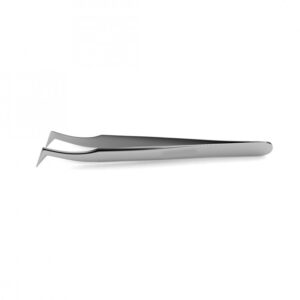
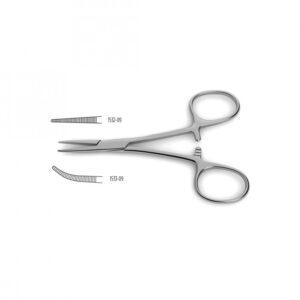

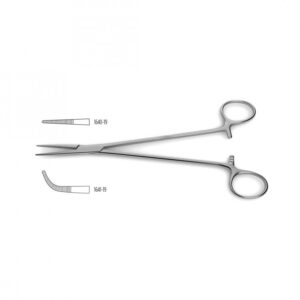
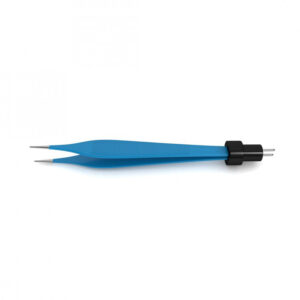
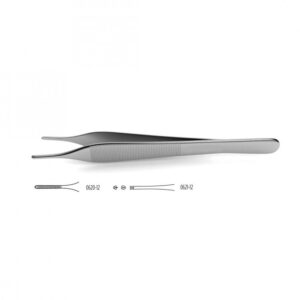
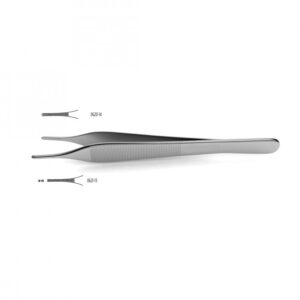
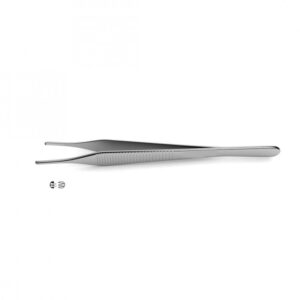

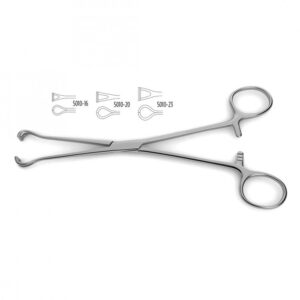

Reviews
There are no reviews yet.